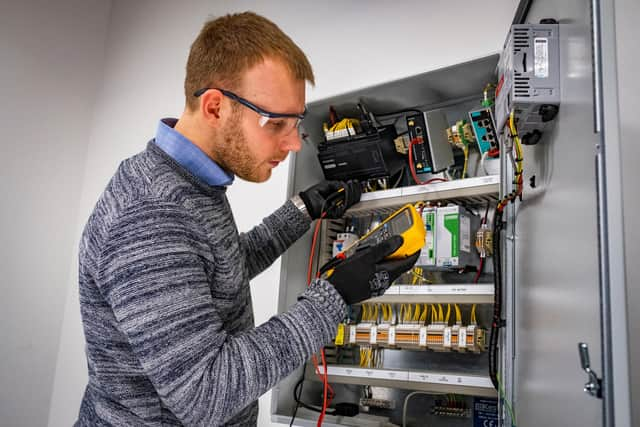Scots should use technology to get renewables onto the grid sooner rather than later to prevent power cuts and tackle climate change - Dr Graham Ault
Earlier this week environment correspondent Ilona Amos said that recent power cuts caused by storms Arwen, Corrie and Malik had underlined concerns about the shift to renewables.
As she put it: “It’s hard to care about global warming if you’re sitting in the dark, freezing to death.”
There is an answer to both these concerns.


Advertisement
Hide AdAdvertisement
Hide AdIn East Lothian we’ve deployed software which has sped up and substantially reduced the costs of grid connections for renewables, and in Northumberland our software is enabling Northern Powergrid to manage their network as a set of separate microgrids to minimise outages to customers.
Recent analysis of the project in East Lothian shows what is possible.
Intelligent control systems continually monitor the limits in a given area on the electricity network and then allocate the maximum amount of capacity possible to customers in that area.
Such systems are highly automated and protect the network by responding on a second or sub-second basis.
They can therefore allow more customers to connect within a given constraint area, or allow customers to connect new capacity or better utilise existing capacity ahead of any costly network reinforcement.
At Dunbar, between 2015 and 2019, five energy projects – four wind farms and an energy-from-waste development – were able to connect to the grid well ahead of a proposed upgrade in 2021.
Four of the projects would probably not have gone ahead at all if they had had to wait until then for a connection.
Network flexibility in general, but this approach in particular, provides the foundation for quicker and less expensive development of clean energy.
Advertisement
Hide AdAdvertisement
Hide AdLooking at the bigger picture, if we’re to make an integrated clean electricity system work, we need more international interconnectors to share clean energy between countries, and keep the system balanced and secure.
And we also need investment in energy storage, such as batteries, to keep the energy for when it’s needed, including the coldest and stormiest days.
With extra renewable capacity we will need to move to a much more flexible system that operates rather like peak pricing on trains, incentivising the decentralised sources of generation to match periods of demand and consumption with renewable generation output.
The transition to a truly green grid can be accelerated and it doesn’t have to be a bumpy ride.
We have the technology to make it happen.
Dr Graham Ault is executive vice president of markets and products at Smarter Grid Solutions
A message from the Editor:
Thank you for reading this article. We’re more reliant on your support than ever as the shift in consumer habits brought about by coronavirus impacts our advertisers.
If you haven’t already, please consider supporting our trusted, fact-checked journalism by taking out a digital subscription.
Comments
Want to join the conversation? Please or to comment on this article.
